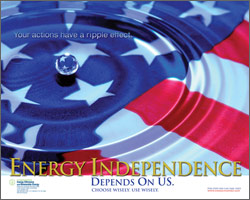Governor Rod R. Blagojevich and the Illinois Department of Natural Resources have named 24 Illinois companies and organizations 2006 Governor’s Pollution Prevention Awards winners for their significant achievements in protecting the environment and boosting the economy. The 20th annual Governor’s Pollution Prevention Awards were presented in Bloomington during a luncheon hosted by the Waste Management and Research Center (WMRC), a division of the Illinois Department of Natural Resources (IDNR).
Applicants for the awards were judged in a statewide competition on criteria including technological innovation, environmental significance, economic benefits and commitment to pollution prevention.
“We were impressed again with the variety and quality of the projects undertaken by the winning companies,” said George Vander Velde, WMRC Director. “These businesses and organizations have proven that pollution prevention makes good sense for the environmental and economic health of Illinois. They have achieved their pollution prevention goals and saved millions of dollars in pollution control, waste disposal, energy and raw material costs.”
The winners include:
Small company
Chem Processing, Inc. (CPI), Rockford
PortionPac Chemical Corporation, Chicago
Spraylat Corporation, Chicago
Consolidated Printing Co., Chicago
Large company
Farmland Foods, Inc., Monmouth
Illinois Department of Military Affairs, Springfield
CITGO, Lemont
Vendor/Supplier
Finishes Unlimited Inc., Sugar Grove
Educational Organization
Pontiac Township High School, Pontiac
Continuous Improvement
Small company
Lansing Cleaners, Lansing
R.B. White, Inc., Bloomington
Large company
GE Healthcare, Arlington Heights
Abbott, Abbott Park
ITT Bell & Gossett, Morton Grove
Gates Corporation, Galesburg
Nestle’ USA, Jacksonville
Cardinal Health, McGaw Park
Continental Tire North America (CTNA), Mount Vernon
International Truck & Engine Corporation, Melrose Park
Service Organization
St. Joseph’s Hospital, Breese
Sarah Bush Lincoln Health System (SBLHS), Charleston/Mattoon
Innovate Illinois Award
Caterpillar’s Mossville Engine Center, Mossville
For more information on the Governor’s Pollution Prevention Awards, visit the WMRC website.

 In honor of
In honor of  Check out the web site for
Check out the web site for